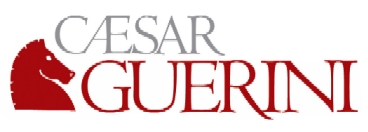
How Good is Tungsten Super Shot, Really?
The short answer is that it is astonishingly good, and by far the best shot material available. For years, the ideal wild pheasant load has been #5 lead. Back in the day, #5 lead was ideal for mallards, #4 lead for long range pass-shooting of ducks, and #2 lead for large geese.
Number 9 TSS is more lethal than #5 lead at all ranges. Number 8 TSS blows away #5 and #4 lead, and comes surprisingly close to lead #2 at 40 yards, with 3 inches of penetration compared to 3.15 inches for lead #2. TSS #7 hits 3.57 inches of penetration, outperforming lead #2 substantially.

The pellet counts of TSS are even more impressive. The table above shows all 1-1/4 oz. loads. An 1-1/4 oz. payload of #5 lead is about 214 pellets, shrinking to 109 pellets with #2 lead.
TSS #9 is 446 pellets, over twice the pellet count of #5 lead. TSS #8 is perhaps the most versatile of all TSS shot sizes, good for most everything that flies. 1-1/4 oz. of TSS #8 is 313 pellets. You can drop the payload weight with TSS, enjoy the commensurate drop in recoil, and still have better range.
For example, 1 oz. of TSS #8 nets you about 251 pellets: bettering the pellet count (214) of 1-1/4 oz. of #5 lead. Yet that load is sufficient for geese and a new level of performance for long range ducks, all with substantially less recoil. The old “pheasant blocker” load (and a popular lead turkey load) was 1-3/4 oz. of #4 lead, about 236 pellets. Dropping down to a low recoil 1 oz. TSS #8 load soundly trumps the 1-3/4 oz. lead load on all levels.
That’s the load I’d like to see offered: easy on the shoulder, easy on guns, and with less payload, a bit easier on the wallet as well. Though TSS loads are most closely associated with turkey, they need not be. The limit here in Illinois is two wild pheasants per day, hardly high-volume shooting, so TSS loads make perfect sense.
TSS shot has created a niche turkey market for the .410 bore, with no question that a 7/8 oz. load of #9 TSS will kill a turkey stone dead. My question is why in the world is a 1 oz. load not offered in 20 gauge or 12 gauge in TSS #9? You cannot kill a turkey much past dead, and with 1 oz. of TSS #9 out of a 12 or 20 gauge, you’ll have more pellets to work with than that 7/8 oz. load: and delightfully low recoil for your son, daughter, wife, or yourself.
Yet, for some reason, manufacturers ignore that, opting for the more brutal 1-1/2 oz. (or heavier) loads out of the 20 gauge, or 2 oz. 12 gauge loads. For spring turkey, a 1 oz. TSS #9 load far exceeds pattern quality of the old, but proven 1-1/4 – 1-5/16 oz. #5 buffered lead loads and also, much heavier 12 gauge loads. A full 2 ounces of lead #5 is 270 pellets. Yet just 1 oz. of TSS #9 is 357 pellets. At 40 yards, there is no reason for anything more. There is no question that tungsten shot is expensive. However, I predict that 1 oz. of TSS costs about half as much as 2 ounces of it.
Copyright 2020 by Randy Wakeman. All Rights Reserved.











































